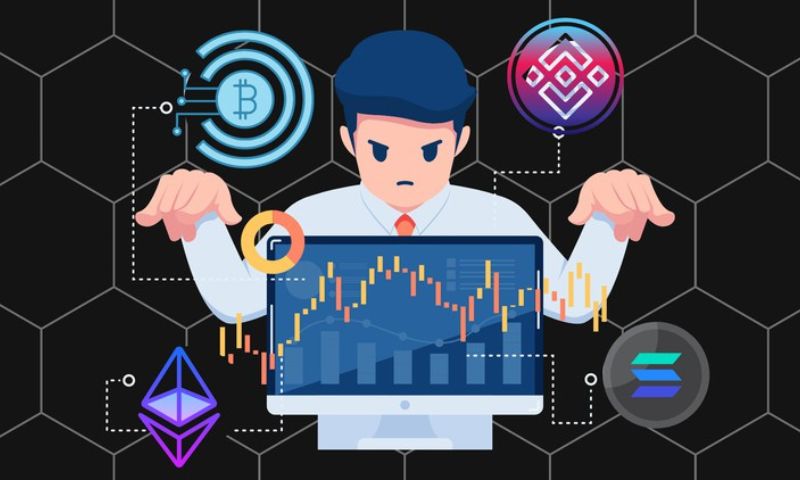Diving into the digital currency world means more than just tracking prices. How to do fundamental analysis of cryptocurrency projects is your edge. You steer clear from hype and focus on what matters: Whitepapers, team skills, tokenomics, and network health. I show you step by step. We’ll dissect key details like token utility and smart contract security. And you bet, we’ll look beyond the code, at community strength and legal groundwork. So, gear up to become a savvy investor who knows the ins and outs of crypto fundamentals.
Understanding the Fundamentals: Your First Step in Crypto Analysis
The Importance of Whitepaper Dissection
When you pick a crypto project, start with the whitepaper. It’s the project’s birth certificate, its DNA. It tells you what the project is, what problem it solves, and how it plans to do so. Whitepaper analysis is like a treasure map. Read every word. Ask yourself, does this make sense? Is it a real solution? You’ll find out if the idea can stand on its own.
A good whitepaper shows you the project’s heart. It covers the market need, the technology, and how the crypto fits in. You should understand the blockchain technology it uses. It must be clear and logical. If it’s hard to get, it might not be for you. Check for the use cases of the cryptocurrency. They should be real and useful. Look for the revenue models too. Can this project make money? This is key.
Tokenomics is another vital part of the whitepaper. How will the tokens work? Will there be enough? Check the supply mechanisms. How do they control the number of tokens? This affects the price. The token distribution is important too. Who gets the tokens and when? Be careful if the team keeps a lot. They might have too much control.
Strong whitepapers talk about risks. All projects have them. Does the whitepaper discuss them? It should. That shows honesty. This is where your due diligence starts. Your money is at stake.
Assessing the Team Behind the Project
Next, look hard at the team. They’re the engine behind the crypto. A strong team has experience and success in their past. Check their history online. Have they done this before? What were the outcomes? You need to trust this crew with your investment.
A good crypto project team is diverse. It has coders, business folks, and advisors. Each should be good at their job. Developer activity is a sign of health. A busy team is improving the project. New updates, fixes, and features show they care and are working.
Community support counts too. How many follow and talk about the project? Are they excited, engaged? This is the network effect. It can lift or drop a project. Partnerships are a good sign. They show other businesses believe in the project.
Always check for updates and plans. The crypto project roadmap tells you where they’re headed. Does it look good? Is it realistic? You want a team that can deliver.
You’ve started your crypto journey. You’re looking in the right places. Use these steps, ask questions, and stay smart. Now, you’re ready for more. It’s just the beginning. Keep learning, and you might become a master at this.
Tokenomics and Market Dynamics: Decoding the Valuation
Token Distribution and Utility
When you look at crypto, tokenomics is key. This means how tokens work and spread out. Think of it like a game. Every player gets game pieces. But in crypto, these pieces can do more, like give you a say in the game’s rules or pay out rewards.
For example, a project might keep some tokens for their team or to grow the biz. The rest go to people like us, the users. Now, here’s where we ask: Why do these tokens matter? They can let you trade, bet on outcomes, or unlock services. That’s their utility – their purpose or power.
Here’s a smart move: Check the whitepaper. It’ll show you the plan. More than just talk, look for clear cases where tokens really shine. As you get this down, checking out the project team is smart too. They’re the ones driving the whole game.
Market Cap and Token Liquidity Considerations
Moving on to market cap – that’s the total value of all the tokens together. It’s simple, just times the current price by total tokens out there. It tells you how big a project is, but not if it’s good or not or even priced right.
Now, get this, liquidity also counts a lot. This means how easy you can buy or sell without shifting the price too much. A deep pool here means you’re not stuck if you want out. Ever seen prices soar or drop in a flash? That’s low liquidity at work. Not a friend to stability.
Let’s break this down. Higher the liquidity, better for you. It’s like having a big crowd at your yard sale; stuff moves fast. But with crypto, exchanges are the yard. Some are big, and some are small with different vibes and rules.
Big idea now – which ones have our token? And how does it play by the rules? Crypto can bump into law issues. So a token on the up and up with the rules is less likely to hit a bad bump.
In wrapping it up, tokenomics and market stuff guide you to smart picks. You’ll want to dig into how tokens spread out and what they’re for. Plus, keep eyes on market cap and how liquid the token is. All these bits help you avoid duds and find the gems.
Always look at what you’re getting into. Do some digging, ask around, and keep your cool. That way, you’re set to make choices that are smart for you. Remember, in crypto land, knowledge is your best coin.
Technical Strengths and Network Health
Blockchain Consensus Mechanisms
A blockchain’s heart beats with its consensus method. It’s how all peers agree. It’s crucial. It keeps the network alive and safe. There are many types, each with strengths and weaknesses.
Proof of Work (PoW) needs much work. Miners solve puzzles to validate blocks. It’s secure but uses lots of power. Bitcoin uses it.
Proof of Stake (PoS) picks validators based on their stake. It’s greener and faster. Ethereum is moving to it.
Delegated Proof of Stake (DPoS) lets token holders pick a few validators. It’s really fast. Block generation is more predictable. EOS uses it.
Byzantine Fault Tolerance (BFT) handles failures well. Even if some nodes fail, the network is okay. NEO uses it.
These mechanisms impact safety and the cleanness of the ledger. They affect how well the network can grow over time.
Significance of Smart Contract Audits
Smart contracts are like vending machines. If there’s a flaw, it could give you free snacks or none at all. So we test them, a lot, before they go live.
An audit checks smart contract code closely. Firms like OpenZeppelin help here. They hunt for weak spots, think how hackers might break in.
Audits help avoid costly mistakes or nasty surprises. They mean trust for users and lower risk for project owners. A clean audit can boost a crypto project’s name.
But audits don’t catch everything. Always stay careful. A project with a good audit is like a car with good brakes. It’s safer, but you still must drive smart.
Beyond the Code: The Ecosystem and Future Prospects
Community and Developer Activity
When you study a crypto project, look at its people power. How big is its fan base? How active is it on social media? A strong, vocal community can make or break a new crypto. It’s a sign they believe in the project’s future. People talk a lot when they care. They share ideas, spread the word, and help each other.
Check out who makes the project tick. Look for smart developers who know their stuff. They keep the code top-notch and secure. More devs mean more hands to build the dream. Updates must roll out on time to show they’re on it. A star team pulls in more fans. Good code draws good crowds.
Regulatory Landscape and Project Roadmap
The law is a big deal in crypto land. Each country has its rules, and they are not all the same. Make sure the project you like follows these rules. You want a team that knows legal stuff. Talks to lawmakers, stays ahead of changes. This keeps your investment safe from law-related shocks.
Every legit project has a roadmap. It tells you where they’re heading. Look for a clear, detailed plan with real goals. It’s their promise to you. Do they keep their word? If yes, that’s a green flag. Big goals reached mean trust earned. It’s like a progress report for your investment.
Looking past the code is about seeing the bigger picture. It’s about people, laws, and promises kept. A project with a beating heart is one you can get behind. It’s got skin in the game. It knows where it’s going. It plays by the rules. That’s how you spot a winner in the wild world of crypto.
In this post, we’ve covered how to really dig into crypto analysis. First, we talked about whitepapers and the teams behind projects. They’re key to understanding what a crypto is all about. Then we dived into tokenomics, looking at how tokens spread out and their real-world use. Market cap and how easy it is to trade tokens matter too.
Next, we checked out the tech that keeps the crypto running strong. We learned about consensus mechanisms and why smart contract audits are a big deal. Last, we explored the community and devs working on the project. We also thought about how rules might change things and what the project plans for the future.
I hope you feel more clued in on crypto now. Remember, knowing the nuts and bolts—like what we’ve talked about—can really pay off. Keep an eye on both the details and the big picture to make the smartest moves in crypto.






